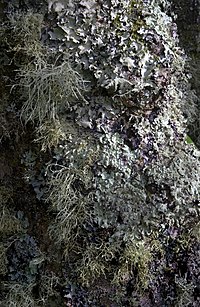
Photo from wikipedia
Abstract Sunflower is an important source for edible oils and biodiesel production. Its productivity is limited by many agronomical practices one of which is the sowing date. In this study,… Click to show full abstract
Abstract Sunflower is an important source for edible oils and biodiesel production. Its productivity is limited by many agronomical practices one of which is the sowing date. In this study, the effects of different sowing dates from early April to late June on phenology and yield of sunflower cultivars were investigated. The results showed that sunflower has a relatively long period of possible sowing dates, stretching from early April to late June in North West of Iran. However, delayed sowing dates significantly decreased the number of days needed for phenophases. For every day of delay, the model predicted (R2=0.97) a losing rate in achene yield by 22.2 kg h−1 from the first sowing date. For relationships between growing degree days (GDD) and yield, almost the same results were obtained. About 22 kg h−1 reduction (R2=0.79) in yield per day was estimated by GDD index when the average GDDs per day was 14.2. However, helio-thermal units (HTU) did not predict this reduction accurately. A suggested comprehensive model, that used the percent of yield losses and changes in vegetative to reproductive ratio, found a significant and positive relationship between the indices and yield losses. For all indices, an increase in vegetative to reproductive ratio resulted in increased grain yield losses.
Journal Title: Helia
Year Published: 2018
Link to full text (if available)
Share on Social Media: Sign Up to like & get
recommendations!